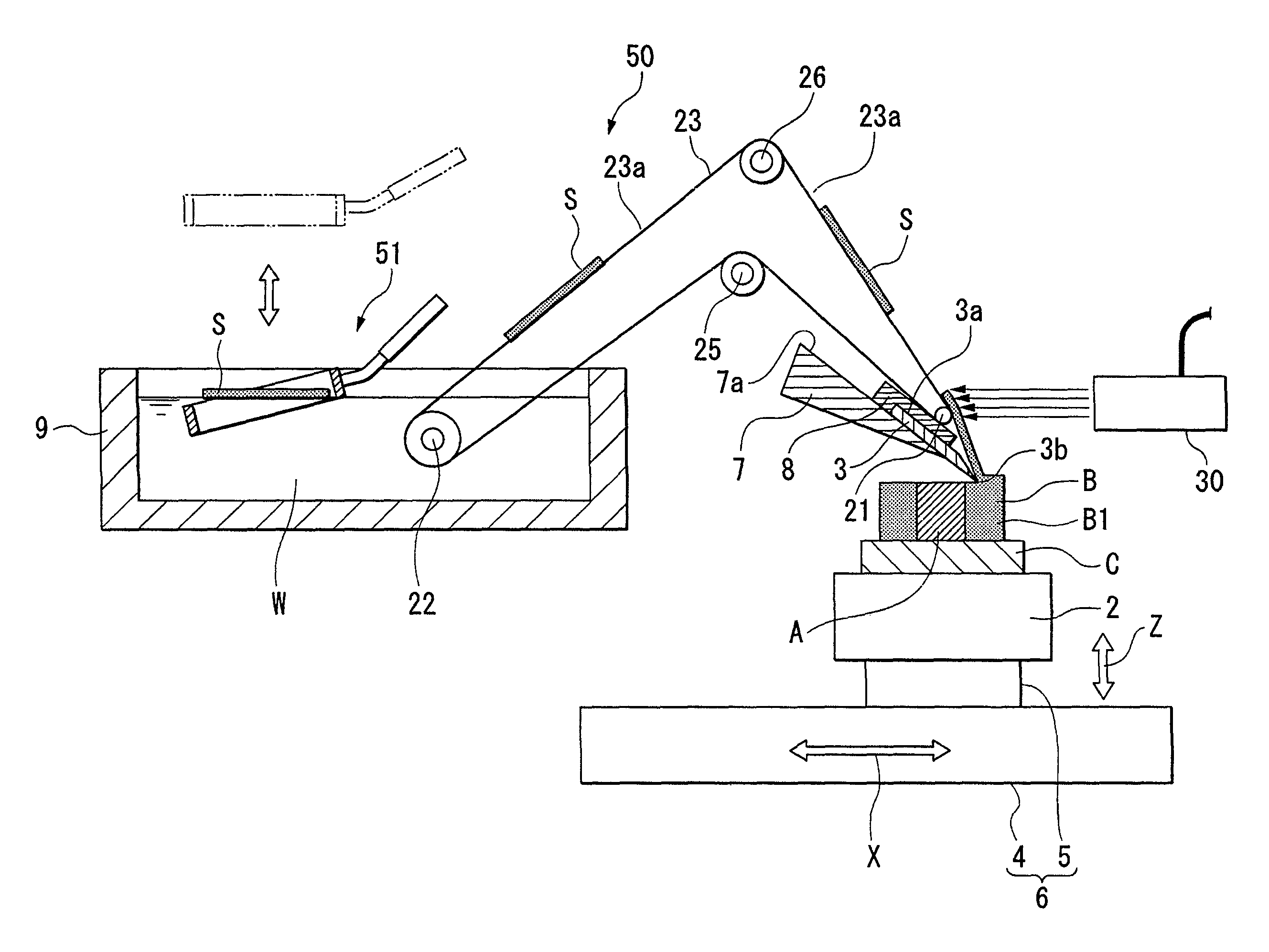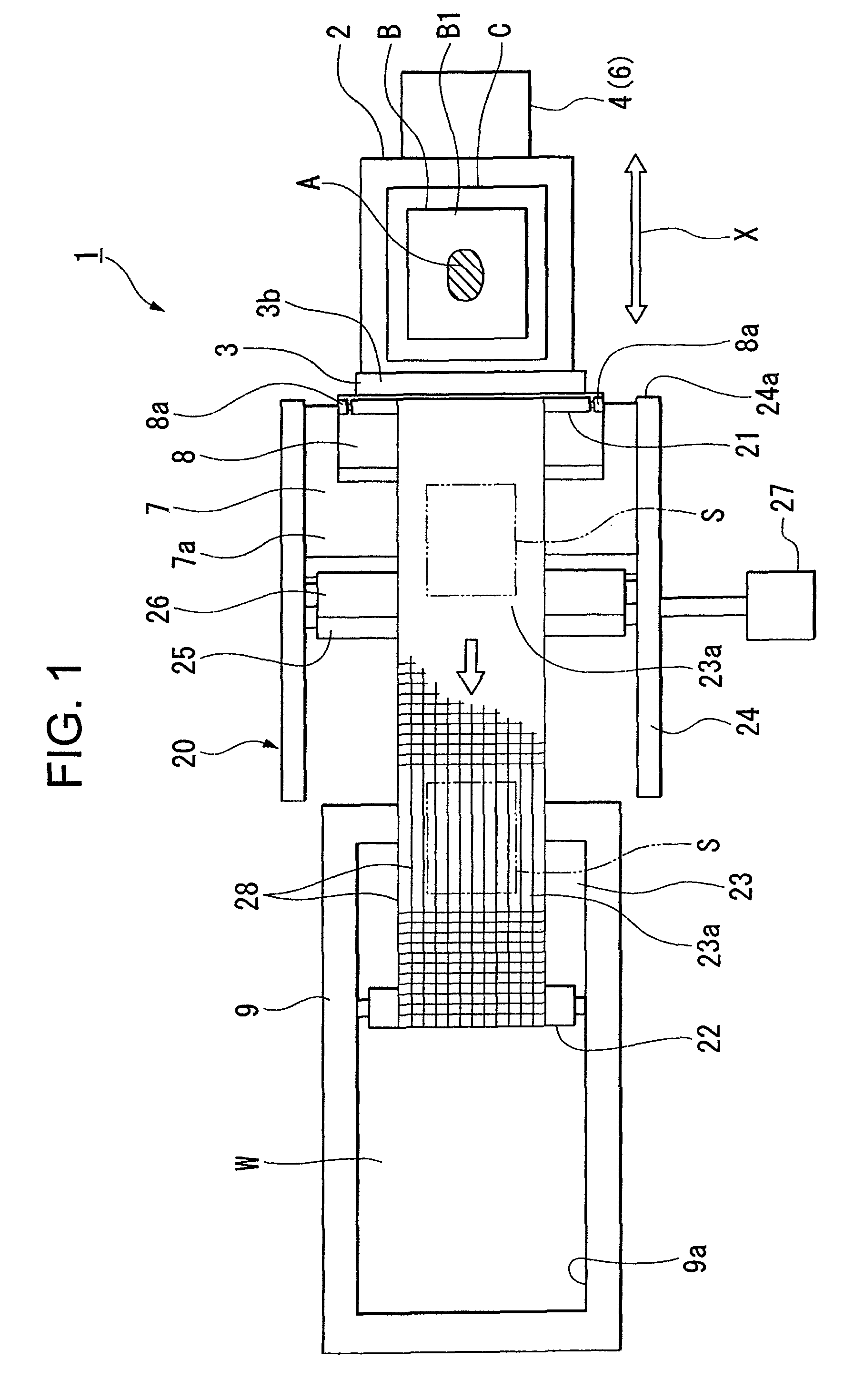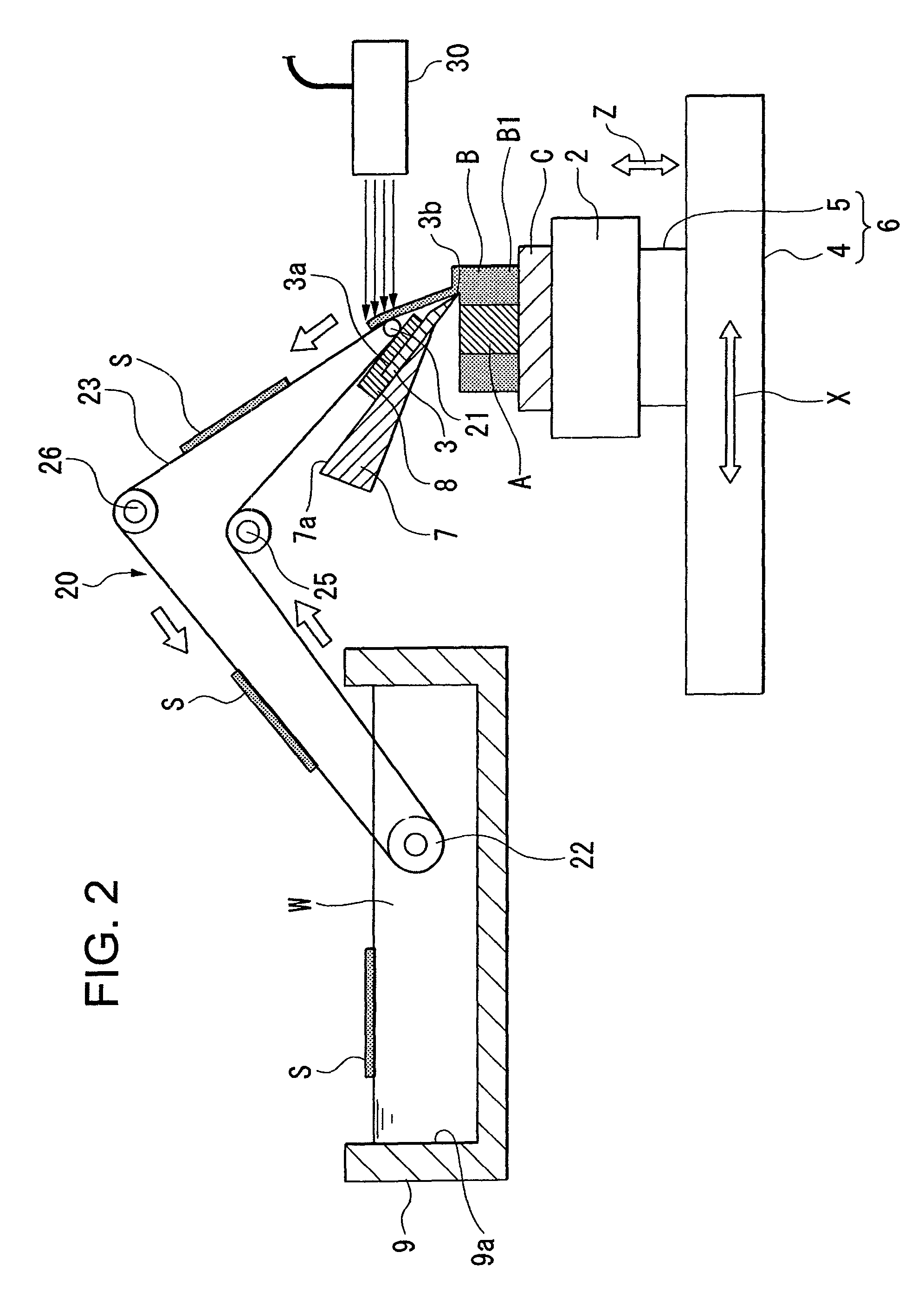Thin-section conveyor apparatus, thin-section scooping tool, and method for transporting thin sections
a conveyor and thin-section technology, applied in the directions of transportation and packaging, pile separation, instruments, etc., can solve the problems of thin-section thin-section adhesive loss, peeling off, color density detrimental to microscopic observations, etc., to reduce the possibility of entraining water and shorten the process time
- Summary
- Abstract
- Description
- Claims
- Application Information
AI Technical Summary
Benefits of technology
Problems solved by technology
Method used
Image
Examples
example 1
[0060]FIGS. 1 and 2 each show a thin-section manufacturing system equipped with a thin-section conveyor apparatus according to the invention, wherein FIG. 1 is a plan view of the thin-section manufacturing system and FIG. 2 is the side view of the thin-section manufacturing system. The thin-section manufacturing system 1 shown in these figures prepares ultra-thin thin sections about 3 to 5 μm in thickness from an embedded block B containing embedded therein a biological sample A, and, in the inspection and observation step for the biological sample A, it automatically cuts out thin sections from the embedded block B and transfers them to the next process step. The biological sample A may be a tissue of an organ and the like that has been taken from human bodies, laboratory animals, and the like, which are properly selected in accordance with the fields of interest, such as medical field, pharmaceutical field, food field, and biological field. The embedded block B is such produced by...
modified example
[0080]In the first embodiment, the conveyor belt 23 comprises a part 23a for mounting thin sections on the conveyor belt 23, which is made of warps 28 alone; however, the invention is not only limited thereto, and the part 23a for mounting the thin sections on the conveyor belt 23 may be such having wefts 29 at a density lower than in the other parts.
[0081]Furthermore, in the first embodiment above, the part 23a for mounting thin sections S was made solely of the warps 28 which constitute the conveyor belt 23; however, the invention is not only limited thereto, and the part 23a for mounting thin sections S thereon may be constituted, as shown in FIG. 5, by perforating a hole 31 in a part of the conveyor belt 23, and attaching warps (linear body) 32 extended along the direction of transportation of the conveyor belt 23, in such a manner that they may be disposed in parallel and with predetermined intervals taken among them. In this case, the conveyor belt 23 need not be a cloth, but ...
example 2
[0083]FIGS. 6 and 7 show a thin-section manufacturing system equipped with a thin-section conveyor apparatus according to the invention. FIG. 6 is a plan view, and FIG. 7 is a side view partially cross sectioned. In the present embodiment, the same members as those used in the aforementioned examples are indicated with the same symbols to omit their explanations.
[0084]Referring to FIG. 6, the thin-section manufacturing system 40 described in the present embodiment comprises a cutter 3 provided at a draw angle θ with respect to the axial line L perpendicular to the direction of transportation X. The conveyor unit (thin-section conveyor apparatus) 41 is equipped with a direction switching roller (starting point roller) 21 and a rear roller (ending point roller) 42, and a conveyor belt 43 wound around the rollers 21 and 42. Furthermore, the rear roller 42 is axially fixed in a rotatable manner to a frame not shown, and supports conveyor belt 43 so that the belt may be run in the direct...
PUM
| Property | Measurement | Unit |
|---|---|---|
| thickness | aaaaa | aaaaa |
| angle | aaaaa | aaaaa |
| angle | aaaaa | aaaaa |
Abstract
Description
Claims
Application Information
 Login to View More
Login to View More - R&D
- Intellectual Property
- Life Sciences
- Materials
- Tech Scout
- Unparalleled Data Quality
- Higher Quality Content
- 60% Fewer Hallucinations
Browse by: Latest US Patents, China's latest patents, Technical Efficacy Thesaurus, Application Domain, Technology Topic, Popular Technical Reports.
© 2025 PatSnap. All rights reserved.Legal|Privacy policy|Modern Slavery Act Transparency Statement|Sitemap|About US| Contact US: help@patsnap.com



